Vikings at the British Museum

Vikings: Life and Legend
10 images
New archeological discoveries and objects never before seen in the UK are on show 6 March – 22 June 2014 at The British Museum.
- Late 12th century, Uig, Lewis, Scotland. Walrus ivory © The Trustees of the British Museum.
- (939–41). England. Silver. © The Trustees of the British Museum.
- Silver-inlaid axehead in the Mammen style, AD 900s. Bjerringhøj, Mammen, Jutland, Denmark. Iron, silver, brass. L 17.5 cm. © The National Museum of Denmark
- c. 700, Hunterston, Ayrshire, Scotland. Gold, silver, amber. Diam. 12.2cm. © National Museums Scotland
- 1150-1145 © The Trustees of the British Museum
- AD 950 – 1000. Hedeby, modern Germany. Copper alloy. L 16.2 cm. Archäologisches Landesmuseum, Schloss Gottorf, Schleswig. © Wikinger Museum Haithabu
- 800-1050. Tjørnehøj II, Fyn, Denmark. Copper alloy. © The National Museum of Denmark
- 9th century. Galgebakken, Vrejlev, Vendsyssel, Denmark. Silver. © The National Museum of Denmark
- Hoard of fourteen filigree pendants, spacers, brooch and neck-ring, probably made in Denmark, late 10th century. Neuendorf/Hiddensee, Rügen, Germany. Gold © Jutta Grudziecki, Kulturhistorisches Museum der Hansestadt Stralsund
- 800-1050. Lejre, Zealand, Denmark. Silver with niello. Photo: Ole Malling, Roskilde Museum
The British Museum’s blockbuster Spring 2014 exhibition, Vikings: Life and Legend 6 March – 22 June 2014 explores warfare and cultural identity amongst the often violent, raider and trader warrior race. The show is the first to take place in the new Sainsbury Exhibitions Gallery space, purpose built for temporary exhibitions at the museum.
The wide roaming of the Vikings included forays into the Byzantine Empire and this show emphasises Viking global expansion during their core period from the late 8th century to early 11th century. Objects on view demonstrate trade between great empires and include new archeological discoveries and objects never before seen in the UK alongside items from the British Museum’s own collection and from elsewhere in Britain. Thousands of new finds have been taken into account in research that affects modern conceptions of the Vikings and contextualises their maritime society. The Vale of York Hoard, discovered in 2007 near Harrogate features coins and silver from places far flung as Afghanistan, Ireland and Russia with three belief systems (Islam, Christianity and Thor worship) represented.
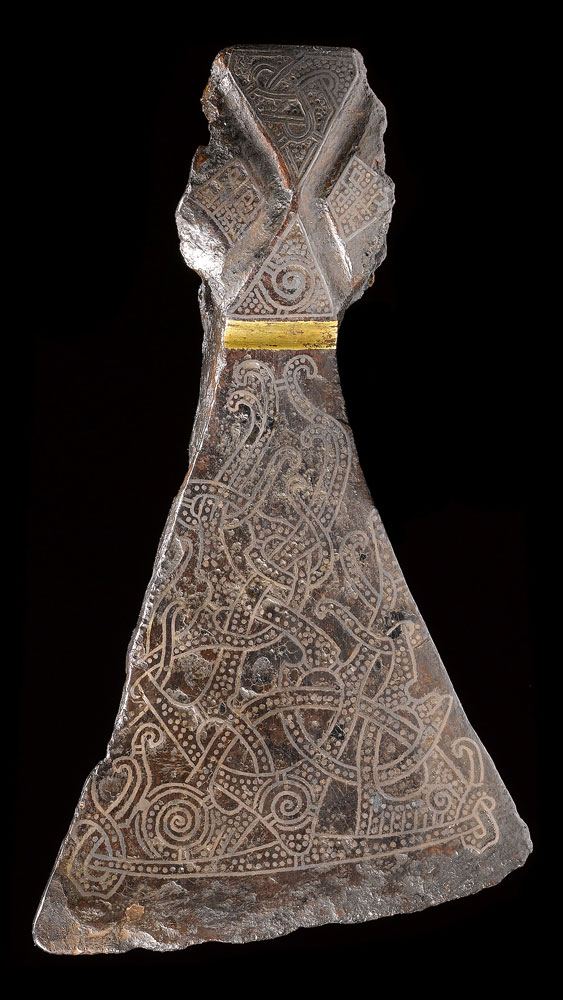
Silver-inlaid axehead in the Mammen style, AD 900s. Bjerringhøj, Mammen, Jutland, Denmark. Iron, silver, brass. L 17.5 cm. © The National Museum of Denmark

At the centre of the show are the remaining timbers of a 37 metre long warship. There are horse stirrups introduced into Western Europe from trade with Islamic Spain (the Vikings altered the round Islamic style of horse stirrup to long, angular stirrups). Although only fragments of silk are on show, other textile-related objects included are knee buckles and leather strap ends that fastened breeches. Excessive use of expensive cloth – indicating wealth and status – meant baggy breeches were de rigeur in Sweden and the Eastern Viking world, which extended into present day Russia. 10th-century Arab diplomat Ibn Rustah recorded his reaction to big breeches in The Book of Precious Records (903-913)
They [the Rus] use up to a hundred cubits of cloth to make their trousers. The man must wrap himself in the cloth and fasten it between his knees.
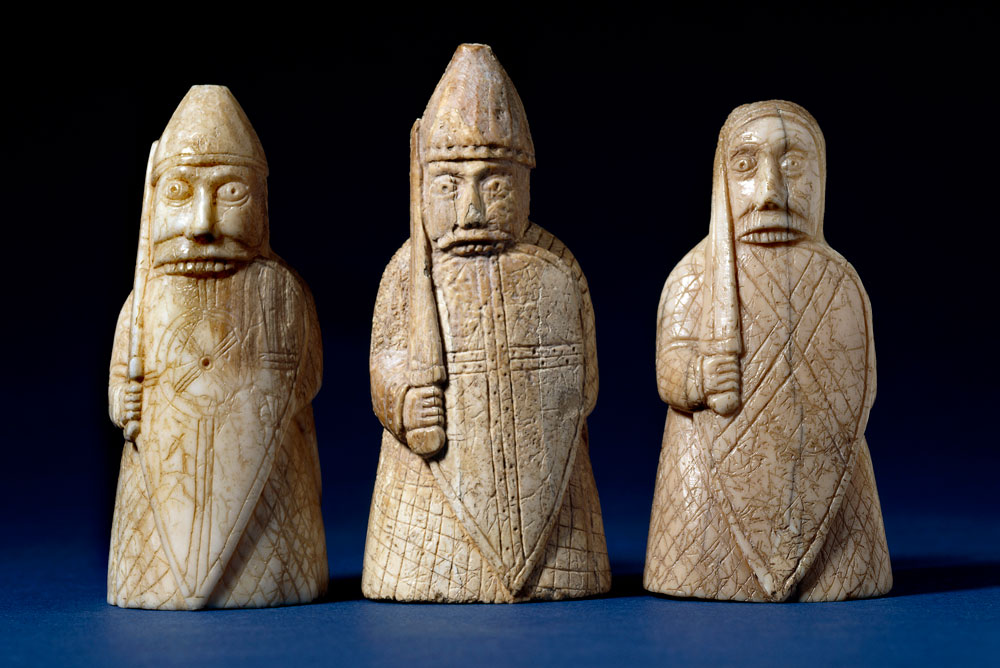
The Lewis Chessmen, berserkers. Late 12th century, Uig, Lewis, Scotland. Walrus ivory © The Trustees of the British Museum.
12th century Lewis Chessmen figures, found on the Western Scottish island in 1831, depict warriors knawing the tops of their battle shields. Presumably referencing behaviour associated with “beserkers” or Viking warriors of Norse legend who entered battle in a wild frenzy, fighting naked or without armour. This depiction syncs with the Viking skull on view whose front teeth were purposely filed in ridges and would possibly have been stained with colour to drive home the fear of the Vikings during battle.



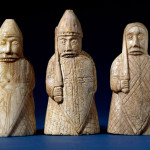
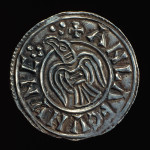
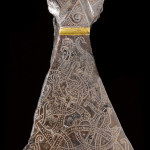
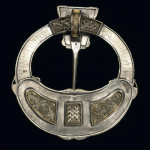


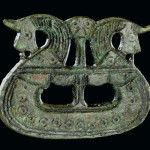

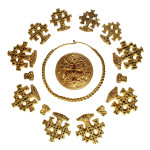






















Comments [0] Sign in to comment